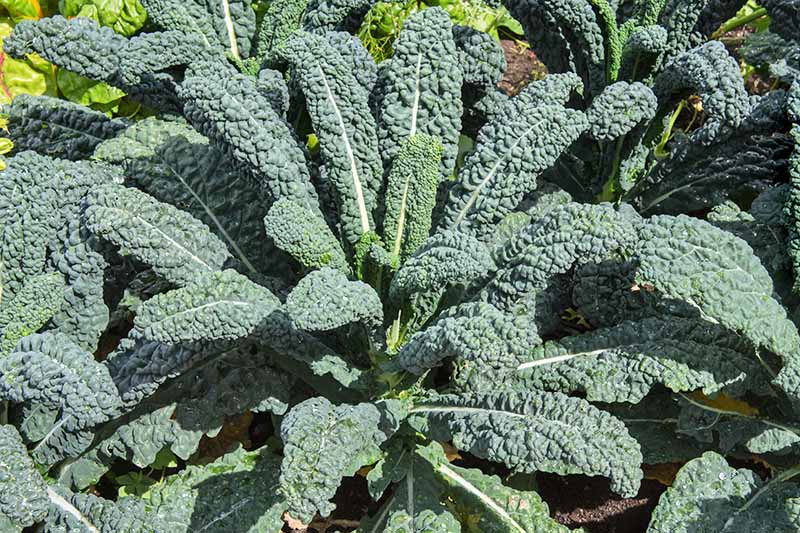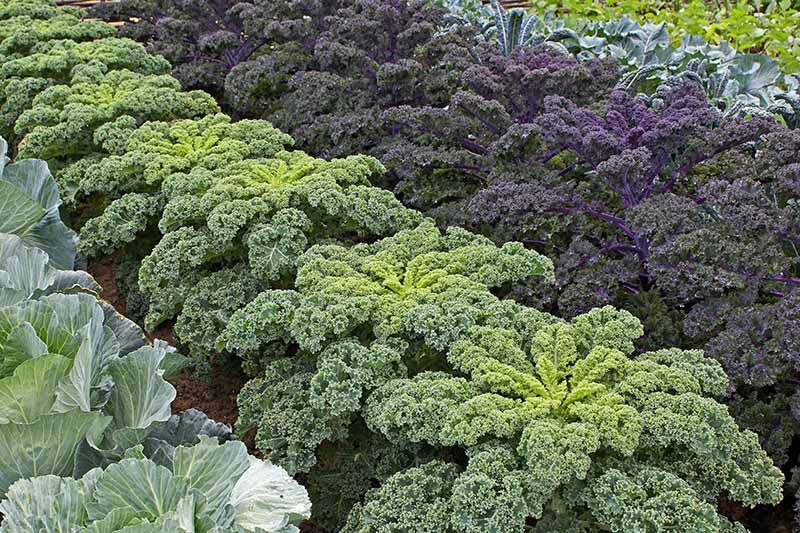How Do You Trim A Kale Plant

Most kale plants reach maturity in 55 to 65 days.
How do you trim a kale plant. Water well the day before moving firm in well after transplanting and puddle in the plants with plenty of water. Water your kale plants regularly so the soil stays evenly moist but never soggy. The kale shown here is black kale aka.
If your usual climate includes regular rain you probably wont have to water at all. Prune your kale plants to slow their bolting. Mulching around your kale plants can help to keep the soil cool and retain moisture.
For mature plants grasp the stem of a mature outer leaf at the base of the main stalk and pull down and out away from the center until it breaks. The largest and oldest leaves on a kale plant are always near the bottom. Repeat this process to pick all the greens you want.
You want the base of the plant. You can side dress plants with compost or blood meal spray foliage with diluted fish emulsion or water with a liquid fertilizer like Bonnie Herb Vegetable Plant Food. If aphids are a problem on your kale plants you can also grow sweet alyssum which is a flower that will grow well and attract hoverflies that will feed on aphids.
Do this every. Give around 1 to 15-inches of water per week. Go for personal preference access and comfort on this one.
How long can I store harvested kale. Cut the largest leaves off with your pruning shears. Tuscan kale lacinato kale cavalo nero or dinosaur kale.

Space 45cm 18in between plants.
How do you trim a kale plant. Mulch is a layer of material at least 5cm 2in thick applied to the soil surface in late autumn to late winter Nov-Feb. They like soil thats consistently moist but not soggy. Prune your kale plants to slow their bolting.
Flowering kale care is pretty simple. How to Harvest Mature Kale All varieties of this vegetable are harvested in the same way. Give around 1 to 15-inches of water per week.
Hoverflies prey on pests like aphids which will eat your kale if left unchecked. You want the base of the plant. According to the NC State University Cooperative Extension a frost will increase the amount of sugar in a kale plants leaves.
In early spring young kale plants can be set out in the garden 3 to 5 weeks before the last spring frost date. I plant my kale in full sun and the topsoil tends to dry out quickly. For mature plants grasp the stem of a mature outer leaf at the base of the main stalk and pull down and out away from the center until it breaks.
As your kale plants start to reach maturity gently pull off their older outside leaves. Smaller and younger leaves are near the top. I mulch around the base of the plant to conserve water.
Kale requires regular waterings though some varieties tolerate drought better than others. Carefully place the plant in the soil filling in the hole. Do this every.

You want the base of the plant.
How do you trim a kale plant. If your usual climate includes regular rain you probably wont have to water at all. Once you harvest those leaves for eating the overall flavor is. Pruning your kale will keep it from going to seed too fast.
Mulch is a layer of material at least 5cm 2in thick applied to the soil surface in late autumn to late winter Nov-Feb. Flowering kale care is pretty simple. Kale likes to switch into flower mode when soil temperatures get too high so adding mulch and groundcover to the area will help keep the soil cool and help with moisture retention.
Rule number 1 is not to let the plants dry out. Cut the largest leaves off with your pruning shears. Hold the leaf you want to cut with 1 hand.
Leave about 2 inches of stems intact and your kale might produce another harvest. Others recommend using clean sharp gardening shears. To do this lay a leaf upside down on a cutting board and use a paring knife to cut a V shape along both sides of the rib cutting it free from the leaf.
Some gardeners prefer to snap kale stems from the plants using their fingers. Give around 1 to 15-inches of water per week. Do this every.
But be prepared to add supplemental water during a dry spell. Mulching around your kale plants can help to keep the soil cool and retain moisture. They like soil thats consistently moist but not soggy.








